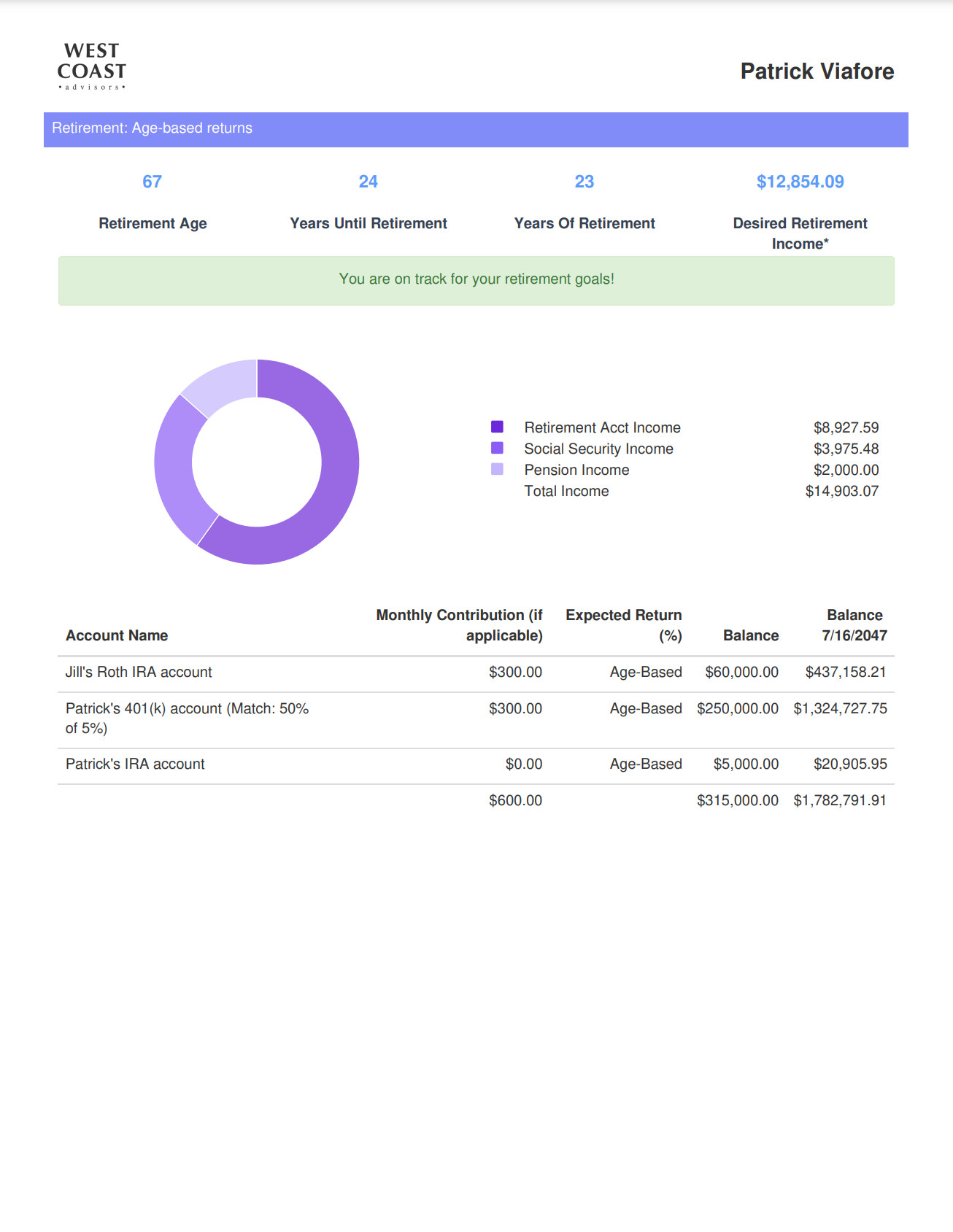


Saturday, October 27, 2018
Financial wellness is a great opportunity to expand your retirement practice
Financial wellness is increasingly a benefit that employers are looking to provide and one that financial advisors (particularly 401(k) advisors with their existing client relationships) are well poised to provide. Creating a successful financial wellness program takes careful planning and consideration. It is a product that needs to be designed, tested, and refined.
What follows are a few of the components you need to consider when building a financial wellness program that demonstrates to employers you have developed something that will have a significant impact on their employees lives.
The very first thing that needs to be done when designing a financial wellness program is to define financial wellness. Specifically you need to define what that looks like for the participant–not in terms of the process but in what that state of being is. A definition might be “cash flow positive, no consumer debt, a six-month emergency fund, on track for a fully-funded retirement, and the right amount of life insurance”.
Every part of the financial wellness program you are building needs to drive the participant towards that state.
Common advice in the 401(k) industry is for participants to “set it and forget it” meaning set their contributions and asset allocation (possibly using easy target-date funds) and then to just check in periodically. Dollar cost averaging and the general trend of up-and-to-the-right will take care of things. Chasing alpha in retirement accounts will end poorly for the participant.
That approach doesn’t work for financial wellness. For the most part one cannot passively stick to a budget, climb out of debt, or secure their loved ones future. Those all require specific actions taken in a somewhat specific sequence (e.g. you won’t make much progress on your debt if you do not track your spending and stick to a budget). The educational process for financial wellness needs to reflect that with a combination of more general, and easily consumable, content that is dripped out periodically as well as content that is specifically focused on the next action the participant needs to take.
There are a variety of educational methods you can employ as part of your program (we covered them in more depth here):
What methods you decide on will be driven by resources and the fees that you charge. Some materials require more up front development time but can be reused indefinitely (they scale well) while other methods of contact require less up-front preparation but make a big difference in getting a participant to stick with the program.
Each and every material you create, and interaction with a participant you have, should have a clear call-to-action that moves a participant closer to your definition of financial wellness.
Think about your financial wellness program as a product. What does it look like? What educational methods are you going to use and in what order? The participant journey starts with the first communication and each subsequent interaction with your program is a point on the map. The treasure at the end is the financial wellness state that you defined.
The more touch points the more likely a participant is to stay on track and take the next action needed to secure the financial freedom that they seek. Wallet1000 is set up to gently, and consistently, nudge a participant to take action.
At the beginning of the participant journey is going to be a step where you gather a person’s personal data which you use, first, to customize their experience and, second, as a baseline against which to measure progress. Without having good data the advice that you provide a participant will be at best incomplete and at worse put them on the wrong path.
It is worth noting that this step often involves a good deal of friction on the participant’s part. You might be asking them to bring all bank and credit card statements to a meeting, fill that information in on a website, or fill out a form that they later bring into a meeting. Because of that it helps to make sure they feel like this step results in a win in and of itself.
The first part of Newton’s first law of physics is “an object at rest stays at rest”. That is true of people as well. It can be incredibly difficult to overcome the initial lack of inertia that people have when it comes to making changes to their behavior. It often requires consistent encouragement to create and maintain momentum. Without some sort of follow up built into your program your participants are not going to achieve the kind of success that you desire.
In order to effectively follow up you are going to need to have a system in place to track participant touches and their progress. Most people might initially turn to Excel. It is easy to set up and use but quickly becomes cumbersome as the number of participants grows–particularly if you’re use the same data set for reporting (sorting and cell linking often break down). Another downside is that Excel is solely an information store which means it does not have any way to facilitate the follow up communications. You are going to need to do those elsewhere (Outlook and via the phone).
Pros:
Cons:
Once you have outgrown Excel the next logical step is implementing a CRM to track your participant interactions and data. Most CRM systems will scale gracefully as your business grows, have reporting, and allow you to easily send follow up emails from within the software.
There are two primary downsides to using CRM here. The first is that they tend to be a lot more expensive than Excel and the cost goes up as your business grows. The second is that they usually are designed to do anything and everything and, because of that, they requires a lot of configuration to get them to do exactly what you want. You might end up adding significantly to the expense by hiring a consultant to configure the CRM for you. Related to that is the fact that if often takes support staff a lot of training and time in order to be comfortable using the software.
Pros:
Cons:
For certain subsets of participants (for example office workers) email is an excellent medium for following up. They are in front of a computer all day and can often find some time during the work day to complete some of their financial wellness tasks. With the right logic in place these emails can also be incredibly personalized and trigger at the right time. The challenge is getting the participant data into the system.
Pros:
Cons:
A phone call is the most effective follow up method for getting a participant to take action. (Even just having a call scheduled on the calendar is often enough to incite action.) They are more personal and harder to ignore. Unfortunately they do not scale well.
What a phone call does really well is allow you to play the role of an accountability partner for the participant. People feel much more compelled to follow through when reporting their results to a human than to a computer. It also is an opportunity to be a sympathetic ear or to provide some tough love and guidance.
Pros:
Cons:
There is a good chance that you end up using more than one method follow up which makes a centralized spot for tracking interactions all the more important.
 Somewhat related to the education methods that we discussed earlier are deliverables–personalized documents that you put in a participant’s hands. The personalized financial plan that Wallet1000 produces is one such example. Another idea is a year-end financial wellness review for each participant (like their year-end 401(k) statement) that summarizes the progress they made over the year (reducing debt by X%, building up the emergency fund, increasing life insurance, getting a will, etc.) along with the next five steps they should take.
Somewhat related to the education methods that we discussed earlier are deliverables–personalized documents that you put in a participant’s hands. The personalized financial plan that Wallet1000 produces is one such example. Another idea is a year-end financial wellness review for each participant (like their year-end 401(k) statement) that summarizes the progress they made over the year (reducing debt by X%, building up the emergency fund, increasing life insurance, getting a will, etc.) along with the next five steps they should take.
If you wanted you could break that summary down into smaller reports that dive deeper into each component of financial wellness (assuming you have the data) and deliver those on a more regular basis.
The bottom line is that participants are going to lean on you or the software you provide to track their progress through your financial wellness curriculum for them. Personalized deliverables are a great way to do that and help them maintain momentum. Additionally, they show employers that their fees are paying for something tangible. Reporting
Employers are going to want deliverables as well in the form of reporting on the effectiveness of the program that they are paying for. All personal participant data should be confidential between you and the participant but certain things can be reported on to an employer on an aggregate basis (assuming the sample size is large enough–if you only have ten people in the program you risk unmasking their personal data).
Number of meetings and calls is the easiest metric to report on. Participant progress (e.g. 85% of people ended the year with less debt than they started the year with) is also great if you are gathering that data from participants. If you have created a measurement of a participant’s financial wellness (a wealth score) then the average of that, and how it improves over the life of the program, would be something to report on.
Even though financial wellness has been around for years we are still in its infancy. The increased interest from employers, coupled with advances in technology, will ultimately lead to a lot of innovation in the space. The program that you design today will not be the same as the program you are providing five years from now. In order to stay ahead of competitors you participants are going to need to be making progress and you are going to need to be able to show that to employers.
While the 401(k) has become more commoditized over the past decade I believe that the opposite is going to happen with financial wellness. Right now it might be a benefits box that employers check but it has the potential to make a big impact on their bottom line. They are going to look for providers that not only tell a good story but have the data that proves they are industry leaders.

Take your participant education to a new level with this free course about guiding participants to positive outcomes.